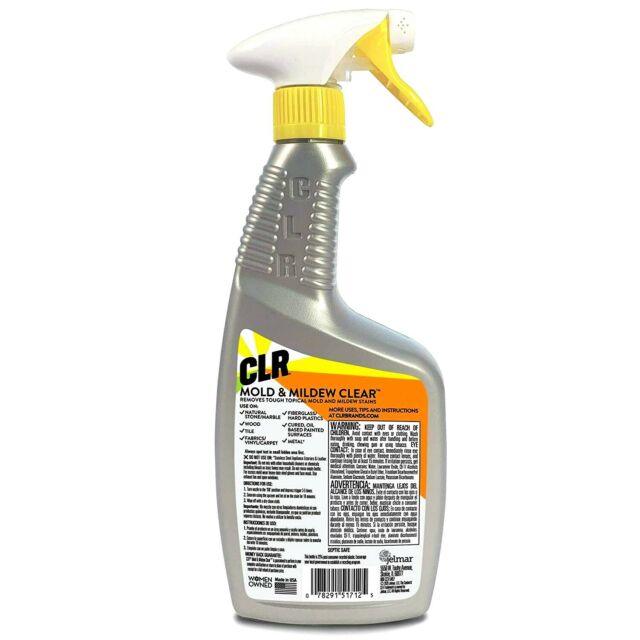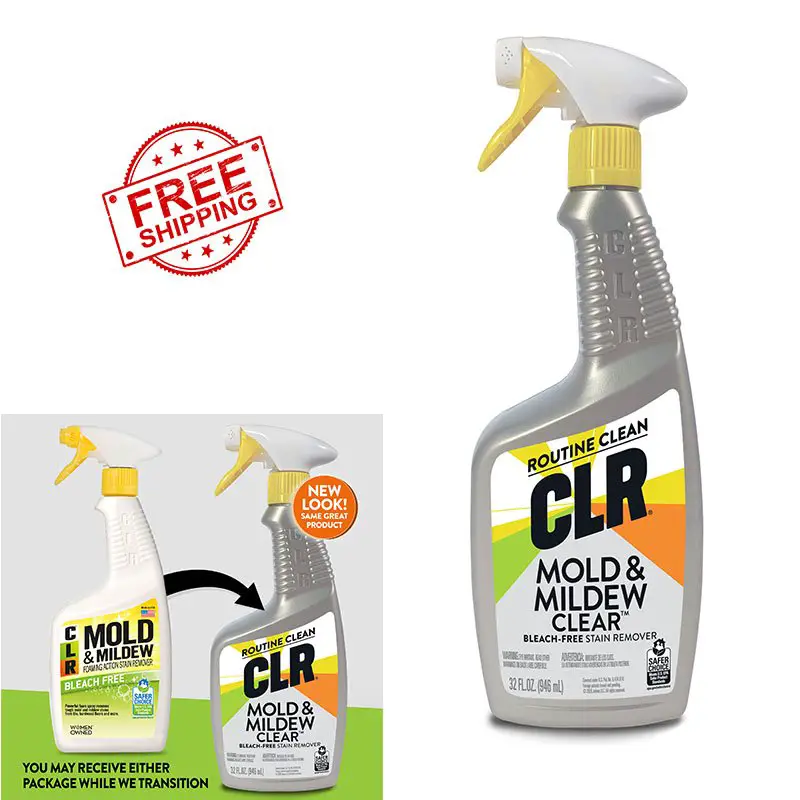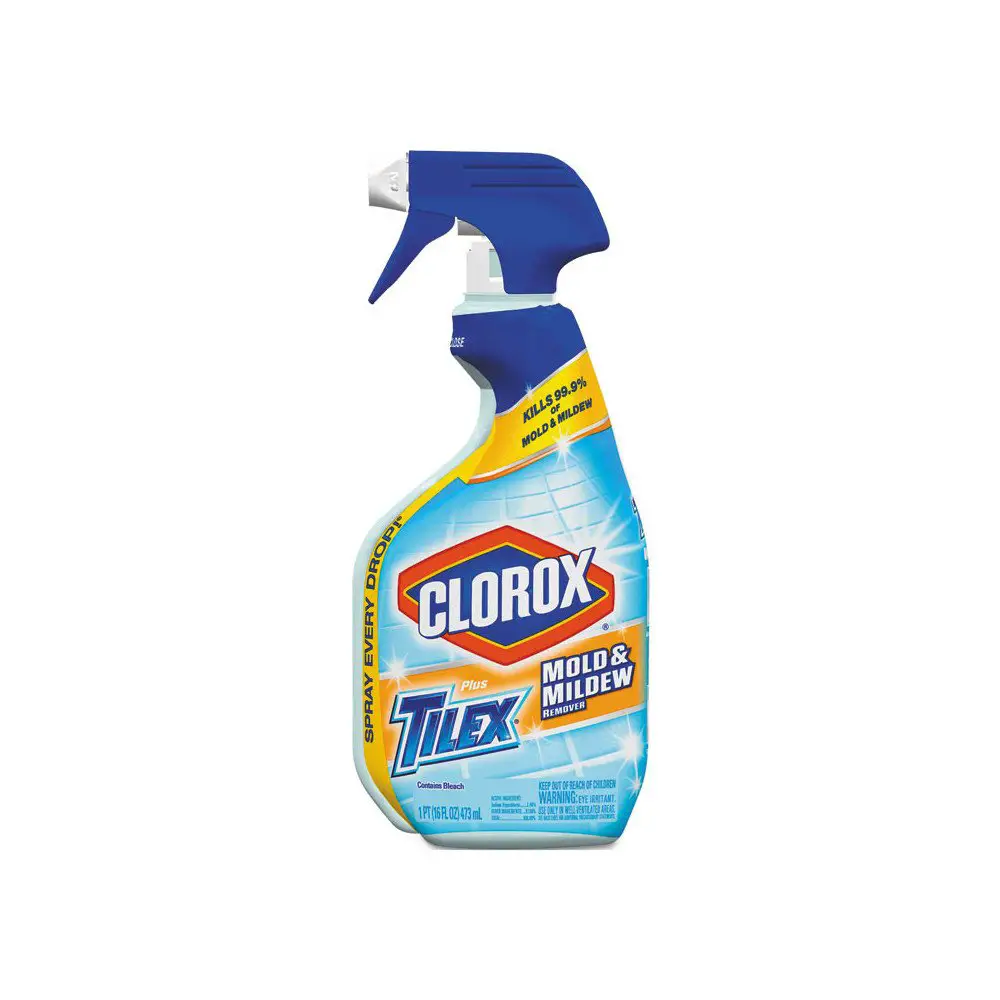Reasons Why You Dont Want To Use Bleach To Kill Or Remove Mold
1. Bleach Does What It Does Best It Bleaches
Bleach basically only removes the color from the visible mold. It magically turns visible mold into hidden mold. It provides a false sense of security that the mold has been removed.
2. Bleach Can Only Reach Surface Mold
In case you didnt know, mold is NEVERjust on the surface of something. It roots and it often roots deeply. This is asurvival mechanism. Mold doesnt want to be removed. As such, you cant killany mold with a product that only reaches the surfaces.
Bleach only reaches the mold on the surface without affecting the membrane underneath. You need to kill and remove this underlying membrane to effectively remove the mold growth and prevent it from returning. Bleach cleaners cannot kill this membrane because its chemical structure prevents it from penetrating porous surfaces. This causes the mold membranes to move deeper into the affected surface to hide from the bleach. You dont want mold to go on the run right?
3. Bleach Causes More Mold Growth
Say what? I know, I know. You aretrying to kill mold with bleach not make it grow more. But guess what? Bleachhas been proven to actually cause additional mold growth.
Anotherproblem with using bleach is that it can actually multiply the moldgrowth. But how?
When bleachis introduced to mold colonies, the mold recognizes the bleach as a threat andreacts. This means that it begins to reproduce at a rapid rate. It rootsdeeper and grows stronger.
So Whats The Deal Can Bleach Make Mold Worse Or Can You Spray Bleach On Mold
Lets start with this little nugget ofinformation. OSHA was one of the first federal agencies toSTOP recommending the use of liquid bleach for mold remediation. The EPA has sinceedited their Abrief guide to mold and moisture and your home to exclude theironce suggested use of bleach as a means to kill mold.
Hmm. Those are two big deal agenciesand while not correct 100% of the time, they usually know what they are talkingabout and only change their policies and guidelines after extensive evidencehas been presented.
Mold Damages To Your Property And Health
Mold eats the materials it grows on,breaks down the material bit by bit. Its presence can result in extensivestructural property damage. Mold is also a threat to spread to new areas bydispersing its spores.
Mold produces allergens, irritants andtoxins. Another source of irritation is microbial volatile organic compounds ormVOCs. These compounds are produced via fungal metabolism and are releaseddirectly into the air, often giving off strong and unpleasant odor. So whileproperty damage is a major concern, the possible health effects for those whoare exposed are a bigger cause of alarm. Health risks associated with airbornemold spores exposure range from mild to severe including the fungal allergy,respiratory infections, eye and nose irritations, throat and skin irritations,mood swings, headaches, memory loss and worse wheezing and asthma attacks.
Don’t Miss: Clean Mold Off Leather Jacket
Bleach Can Damage Your Structure
Just as mold can destroy surfaces by eating into them, bleach can also cause damage to your structure. The corrosive feature of bleach means it can eat into your wood and cause it to disintegrate by weakening the wood fibers. When you apply bleach to metal surfaces, it corrodes the metal and damages your structure.
Bleach Can Contribute To Further Mold Growth

Bleach is made up of about 90 percent water. Moreover, since molds thrive with moisture, spraying bleach on mold can contribute to further mold growth, especially on porous surfaces.
Once you apply bleach to mold on a porous surface, the chlorine content of the beach dries up almost immediately, leaving behind the water content to be absorbed into the wood or any other absorbent material. The water travels down to the root of the mold and helps it thrive. This is why mold problems often become worse a few days after bleach is applied.
Applying bleach on mold may even cause mold to grow in surrounding areas that were previously unaffected.
Also Check: Clean Mold From Ceiling
How To Prevent Clothes From Getting Mouldy
Mould can begin to grow on clothes when left damp or wet in a pile. To avoid this you should:
-
Empty your washing machine as soon after the cycle has finished as possible.
-
Hang wet clothes to dry on the washing line, clothes rack, or radiator as soon as you take them out of the washer.
-
Alternatively, place clothes in the tumble dryer .
-
Sweaty clothing or wet swimwear should also not be left to sit and fester. These should be hung up to dry before placing in the laundry basket.
Looking for more tips on how to remove mould and mildew in your house? Check this video to know how to make your walls mould-free!
Originally published
How To Kill Mold With Borax
Also Check: How To Clean Mold Off Bathroom Ceiling Naturally
How To Remove Mold And Mildew From Upholstery
Jack White, vice president of technical services for Rainbow International, explains whats actually going on when you see mold on your comfy couch.
Mold has to have the right conditions to grow on upholstery. First, there must be an organic food source mold cannot grow on synthetic materials but it can grow on the soil embedded in synthetic materials. There must also be moisture. The organic material has to stay wet for a certain period of time for mold to begin to grow.
Given this knowledge, here are Whites recommendations for dealing with mold on upholstery:
White also adds that silk, wool, antique or vintage upholstery should be cleaned by a professional.
Does Bleach Kill Black Mold On Carpet
This means that the bleaching process will not only kill the mold but the carpet fibers will be safe during the process. However, if there is a wool carpet, the chlorine will dissolve the wool fibers. Additionally, chlorine bleach will remove the color from all fiber types except solution-dyed polyester.
Recommended Reading: How To Stop Mold On Bathroom Ceiling
What Is The Best Way To Get Rid Of Mold
Trying to get rid of mold without proper knowledge or without a professionals help may aggravate the situation or result in even more significant problems than the mold itself.
To get rid of mold completely and prevent mold regrowth, you have to determine the type of mold you are dealing with, the extent of growth, and the root cause of the problem. You have to find the best method to remove the mold, and sometimes this may involve removing the moldy surface completely. You also need to find and repair the source of moisture so mold does not grow again.
Natural ways of removing molds are best advised since most cleaning agents like bleach only remove the mold on the surface without getting to the roots. Also, some of these cleaning products have chemicals that can be toxic to humans.
Is There A Safer And More Effectivealternative Than Bleach To Remove Mold
There sure is! In fact, there are quite a few. Head over to my article on the Best Mold Removers where I break down the pros and cons of the most popular products out there.
In case you were wondering about the effectiveness of other common household products that are used to clean mold, you can learn why they do or do not really work in these posts:
You May Like: How To Clean Up Mold In Basement
What You Need To Know About Bleach
When you think of cleaning up mold in your home, the first chemical that enters your mind is bleach. And many people believed that using this to kill mold works. Read these facts to learn whether mold can really kill mold or not.
What Is Oxygen Bleach

Oxygen bleach, or all-fabric bleach, is a gentle bleaching agent that removes stains and brightens laundry and is safe for use on almost all types of washable white or colored fabrics. Because of its chemical ingredients, it works more slowly than chlorine bleach, is less corrosive and damaging to fibers, and is more environmentally friendly.
You May Like: Get Rid Of Mold On Bathroom Ceiling
Clean Mold From Grout Without Bleach
The question of âHow to Clean Mold From Grout Without Bleach?â is something that many people ask themselves and wonder if it is possible to do so. The amazing people at DYW Carpet Cleaning say the answer to this question is a big âYes.â It is possible to get rid of mold on tile grout without any need to bleach. By lowering the moisture levels in Kitchens and bathrooms, youâll reduce the growth of mold in the grout and on your tiled surfaces. If you do not like the idea of harsh chemicals in many of the available mold removal products, and even some of the household products recommended for the cleanup, there are some more natural and Eco-friendly products you can use. If you want to carry your tile grout cleaning effectively without the need to bleach, there are several natural products you can make use of.
Bleach Causes Structural Damages
While bleach might restore the color of your walls at that moment, long-term use will destroy your structures. Bleach is very corrosive therefore eats into the wood and can weaken other materials. Additionally, it corrodes metal surfaces, leaving them rusty and unpleasant. With time, you will realize the paint on your walls begins to fade.
You May Like: Remove Mold From Bathroom Ceiling
Powder Or Liquid Formulas Which Is Best
Powdered oxygen bleach has a shelf life of several years. Over time and exposure to air, the active chemicals in powdered oxygen bleach will revert to environmentally-friendly natural soda ash or borax after the oxygen is released.
Liquid oxygen bleach formulas are a dilute solution of water and hydrogen peroxide, H2O2. Liquid oxygen bleach will break down more quickly after opening, especially if exposed to light, eventually leaving only water molecules, H2O, behind. Even unopened, the shelf life of liquid oxygen bleach is six months or less.
A Safer And More Effective Alternative To Chlorine Bleach:
Dead or alive, mold spores can still remain allergenic. In some severe cases, depending on the material, it may need to be replaced. Hard surfaces that aren’t ruined by moisture damage can be salvaged and cleaned. In this scenario, we recommend UltraMean-2, a non-toxic, non-chlorine, oxygen bleach-based detergent that can penetrate to reach deeply embedded roots and pull them out. Remember to always take the necessary precautions to protect yourself. Proper steps must be taken to prevent yourself from exposure to toxic mold spores that can make you sick and spread to other areas of the house. Safety gear such as gloves, mask, and safety goggles are always recommended.
After the surface has been cleaned and completely dried, it is very important to follow up with UltraBan, a mold preventative. Do NOT skip this step! If mold has occurred once, it can always occur again. UltraBan was designed to help keep this from happening and will provide your home with a protective barrier to prevent future mold growth.
These products can easily be purchased on , at rhinohide.com, or over the phone at 863.665.0203.
Recommended Reading: Installing Vinyl Stair Nose
Livnar Mgel P Blekmedel
När blekmedel introduceras till mögelkolonier känner möglet igen blekmedlet som ett hot och reagerar. Mögel kan faktiskt användas som blekmedel som matkälla när det väl är exponerat, vilket gör att mögeln växer tillbaka snabbare och starkare. Även EPA rekommenderar inte användning av blekmedel för att ta bort mögel.
Baking Soda: A Great Cleaning Powder
If you want to remove black mold relatively quickly andin a non-toxic way, all you need is baking soda and water. Mix in two tablespoons of baking soda with two cups of water, until the baking soda is completely dissolved. Soak the black mold in the mixture, and allow it to sit for 15-20 minutes.
Then, start scrubbing until the mold is completely removed. You might have to repeat the process a second time if the mold is deeply rooted in the surface.
You May Like: How To Get Black Mold Off Ceiling
Does Bleach Kill Black Mold A Definitive Guide
Summary: Bleach is a strong cleaning agent and is most effective when it is mixed with water. The chlorine in bleach can actually cause more harm than good when it comes to removing mold effectively. We also have a guide about
The question we ask ourselves every time we clean our bathrooms is how we can scrub and disinfect without harming ourselves with toxic chemicals. There are different methods you can use to get rid of the mess and get a sparkling clean bathroom. One is to use bleach, but the question arises of whether bleach kills black mold. Bleach is a more toxic way to clean, and it is possible that bleach will not kill the black mold on your tiles. But there are some precautions you can take to make sure that your clean-up is effective.
Bleach is made from sodium hypochlorite, an ingredient that serves as a disinfectant. Its active ingredient is known as hypochlorous acid. This is a strong bleach that serves as a good disinfectant. It serves as an oxidizing agent which can kill all sorts of pathogens. Apart from that, this is what makes these so-called bleaches so useful.
Is Clorox An Oxygen Bleach

Cloroxoxygenbleach
Also question is, what are the brands of oxygen bleach?
Popular Oxygen Bleach Brand Names
- OxiClean.
- Purex 2 Color Safe Bleach.
- Seventh Generation Chlorine Free Bleach.
- Amway Legacy of Clean All Fabric Bleach.
- OXO Brite.
- Nellie’s All Natural Oxygen Brightener.
Similarly, what is an oxygen bleach? Oxygen bleach is the common term for sodium percarbonate, a compound of natural soda crystals and hydrogen peroxide. Oxygen bleach is widely available in detergents and other cleaning products and comes in a solid, powder-like form, usually diluted in water before use.
Correspondingly, is Clorox the same as bleach?
Bleach‘ is not some specific chemical. Chlorox is the brand name of a particular blend of bleaching chemicals and additives. Bleaching agents are oxidizing chemicals.
Does Clorox bleach have chlorine in it?
The bleach active in Clorox® Regular Bleach2 is sodium hypochlorite . This is the bleach that people sometimes refer to as chlorine bleach . The bleach active in Clorox2® Stain Remover and Color Booster is hydrogen peroxide .
Recommended Reading: How To Clean Bathroom Ceiling
How To Clean Mold From Color Clothes
Mold on clothes can leave stains and a terrible odor if not removed. For white clothes, the solution is most often bleach however, you cannot use regular bleach on colors without fading them. You do have another, color-safe option for removing mold from color clothes.
Mold on clothes can leave stains and a terrible odor if not removed. For white clothes, the solution is most often bleach however, you cannot use regular bleach on colors without fading them. You do have another, color-safe option for removing mold from color clothes. It takes no more time, and is no more difficult than cleaning mold from white clothing.
Essential Oils Can Be Natural Cleaners
Did you know that essential oils can work for pretty much everything you can think of? From cleaning to aromatherapy, skin care, and even to aid women in childbirth, essential oils have proven universally useful!
The properties of essential oils vary, depending on the plant they come from. But they are completely safe to use and if youre trying to find an all-natural alternative to cleaning products, you can use essential oils.
Tea tree essential oil is the best option if you want to get rid of black mold. Mix in two teaspoons of the oil with two cups of water and pour the mixture into an empty spray bottle. Then, apply it onto the mold and let it sit for one hour before scrubbing it off.
If the mold is still difficult to remove, you could replace the water with white vinegar. The mixture will be quite smelly, but it will do its job.
Clove essential oil and cinnamon bark essential oil work in a similar way to tea tree oil. They can also be used for cleaning, and will help you get rid of black mold. Furthermore, theyhave a great scent so they will make your home smell amazing.
You May Like: How To Clean Mold On Bathroom Ceiling
